The group of ground cover roses surpasses any other in the diversity of its members. types and forms.
Among them you can find both low-growing plants with long stems creeping along the ground, and taller ones in which they droop picturesquely. Some, blooming with double flowers, have a distinctly romantic appearance, others are decorated more modestly with flowers of simple shapes, but they do not lose out at all.With all their external diversity, these roses have two very valuable properties in common: they are distinguished by their unusually abundant flowering and the ability to maintain their magnificent outfits until autumn.
Ground cover roses include varieties with such distinctive features as frost resistance, significant lateral growth, rich long-term flowering, abundant covering of shoots with shiny small leaves, resistance to black spot and powdery mildew - the most common diseases of roses.
Planting ground cover roses
Choosing a landing site. Ground cover, like any other type of rose, loves light. Having proper access to sunlight guarantees long-term flowering and the formation of buds, but at the same time, direct exposure to the scorching midday sun is not advisable for plants - the petals can get burned and wither. Planting in shady areas of the yard and in the garden under trees, or near walls is not recommended, as the root system may become diseased, growth will slow down and the plant may die.
It is favorable to plant ground cover roses in the south-eastern or western side of the plot, where the sun's rays will be in the first half of the day, and the shade from bushes and trees will help create the necessary protection in the midday heat.
Another very important point is that seedlings must be planted on a slope and preferably at an elevation of 30-40 centimeters to drain melt water in the spring. Planting at an elevation guarantees effective access to the sun in summer and protection from severe frosts in winter.When planting, it is necessary to take into account the degree of soil moisture in the area - roses do not tolerate excessive humidity and acidity, and in winter, a high level of moisture in the soil contributes to hypothermia of the root system.
When to plant. For regions with warm winters, autumn planting of creeping and carpet roses in open ground is more preferable, and for regions with harsh and frosty winters, spring planting will be more reliable.
When planting in autumn, it is necessary to shorten the shoots a little, since the main pruning of the flower is always done in the spring. In the spring, the shoots are pruned in such a way that strong plants have 2-3 buds, and weak ones - 1-2.
Preparing the landing site. Groundcover roses have shoots that droop low or creep along the ground, so weeding and plant care can be a difficult task. To simplify it, the planting site should be prepared: remove large weeds, weed the soil. It can be treated with Roundup followed by loosening.
All these actions are aimed at removing the stems and roots of harmful plants here and now. However, this is not enough to make caring for plants easier in the future; it is necessary to prevent their growth in the future. To do this, the soil between the planted bushes is mulched with bark, sawdust, decorative wood chips, and black film. The thickness of the bulk mulch should be at least 3-4 cm so that weed seeds cannot grow through it.
As for the composition of the soil, the most favorable soil for planting any roses is loamy, which transports moisture and oxygen well to the plant’s rhizome.Seedlings are poorly accepted and grow in dry sandy soils, which overheat in summer, freeze in winter and do not retain nutrients well. The best option for soil acidity is soil with a slightly acidic reaction ranging from 5.5 to 6.5 pH.
Landing. For planting, holes are formed in the selected area with a depth of 50-70 cm and a diameter of about 50 cm; during mass planting, it is also permissible to dig a trench of the same depth and width as the planting hole. The depth of the hole is determined based on the length of the roots of the seedling plus 10-20 cm.
During planting, it is advisable to water the soil layer by layer with which the hole is filled - this way you will prevent the formation of voids, and after planting you need to compact the top layer of soil, water it abundantly and hill up the seedling. After the new growth on the bush reaches 5 cm, it is recommended to unplant the roses and mulch them.
Depending on the variety of ground cover roses, per 1 sq. From one to three seedlings are planted per meter.
Caring for ground cover roses
Caring for ground cover roses is not much different from caring for other types of roses. These flowers are considered unpretentious. They are rarely affected by diseases and are able to forgive some mistakes in care. The most important thing is to water them regularly and fertilize as needed.
How to water. Watering should be done in the morning or when the sun does not shine directly on the bushes. If you neglect this rule, water that gets on the leaves will cause burns. For the same reason, spraying and fertilizing should not be done in the open sun.
As for the regularity of watering, both overwatering and underwatering are equally destructive for roses. Focus on the condition of the soil.It is necessary to water when the top layer of soil dries 3-4 cm. In autumn, watering is reduced, gradually transferring the plants into a dormant period.
How to fertilize. Good care for roses means, first of all, feeding. During the growing season, ground cover roses can be fed 3 times. The first feeding is carried out in early spring, 2 weeks after the leaves appear. As a fertilizer, you can use the drug “Tsitovit”, “Agricola for flowering plants” or other complex fertilizers with the ratio of components: nitrogen (N) - 1, phosphorus (P) - 2 and potassium (K) - 1 part.
The second feeding is carried out about a month later, and no fertilizer is applied during the flowering period. To stimulate the second wave of budding, repeat-blooming varieties are fertilized immediately after the end of the first flowering (it is recommended to cut off faded buds if the rose does not shed them itself). In the autumn, fertilizing is carried out only with potassium fertilizers for good ripening of shoots.
Trimming. Ground cover roses are practically self-forming, do not require careful annual pruning, and this greatly simplifies the care of these plants. They bloom on shoots of different ages.
Many experts recommend not pruning groundcover roses at all to maintain their natural shape. The most important requirement when planting is to plant them at such a distance from one another that the plants do not interfere with each other.
Shelter for the winter
Many varieties of ground cover roses, especially low-growing ones, are able to winter without special shelter - under a layer of snow. In winters with little snow and harsh weather, you should not rely on such a natural “fur coat”.It is best to cover the whips with spruce branches or build a wire frame and throw lutrasil on it. The air layer above the roses will reliably protect them from winter weather.
You should try to bend the shoots of tall ground cover scrubs to the ground. The bent branches are placed on a layer of spruce branches, otherwise under the cover the plants in contact with the ground may rot. The top of the shoots is also covered with spruce branches or other insulating material.
Reproduction
Ground cover roses are propagated by green cuttings and layering. The easiest way is to make layering. To do this, in the spring, press one or more shoots to the ground, secure them with wire hooks and dig in. The top of the shoot should remain on the surface.
Keep the soil moist all summer. No more care for the layering will be required. Leave the cuttings to overwinter with the mother plant, it will be more reliable. Next spring, separate the young plants and plant them in a permanent location.
Ground cover roses in garden design
Their main purpose is to cover the ground with dense leafy shoots growing horizontally and abundant inflorescences. The use of ground cover roses is largely determined by their growth pattern.
These roses, with their long shoots strewn with numerous clusters of inflorescences, can be planted in any corner of the garden. They can be planted in flower beds, rocky areas of the ground, used to decorate slopes and cover hatches. Some vigorous varieties are grown like climbing roses, with their shoots directed upward onto supports.
Ground cover roses have many faces and can be used in landscape design for different purposes. The simplest thing is to plant them on a green lawn.
Low-growing groundcover varieties can decorate paths and flower beds as a border.
Cascades of blooming ground cover roses cascading from retaining walls, stone stairs, and hills will add originality to a multi-level garden.
Low-growing varieties that creep along the ground also look impressive among stones, so they are often planted in rockeries and hills.
Since ground cover roses have a very thick and dense bush, they can be grown in containers and flowerpots, or planted on open terraces.
The best varieties of ground cover roses
Fairy. The bush is sloping, compact, plant height is 60 - 80 cm, the leaf is small, glossy, dark green. Resistance to diseases is very high, frost-resistant variety, tolerates shade well, planting density is 5 pcs./m2.
Swany. Forms a spreading, abundantly flowering bush. The flowers are pure white, with a soft pink tone in the center, when they first bloom, densely double, in the form of rosettes. They appear in clusters of 5-20 pieces on fairly long stems. Height 60 - 70 cm. Width 150 cm. The variety is resistant to powdery mildew.
Scarlet. Cherry-red, cup-shaped, double, 40-45 petals in one flower, flower diameter 3-4 cm, has a light aroma. Bush height 100 - 150 cm. Frost-resistant variety, high resistance to disease.
WITHup Dorothy (Super Dorothy). The flowers are pink, 3 cm in diameter, in inflorescences of 7-10 pieces, bush height 70 cm, lash length 250 cm. Diameter of 1 bush 2 sq.m. Used to decorate a flower bed, like a climbing rose on a support.
Hello (Rosa Hello). Dark red, purple, densely double, 110-120 petals in one flower, flower diameter 5-6 cm, by the end of flowering the flower acquires a raspberry-cherry color. Bush height 30 - 50 cm. Frost-resistant variety (up to -30 ° C).
You may be interested in other ground cover plants, you can read about them in the article "Ground cover perennial flowers for the garden"

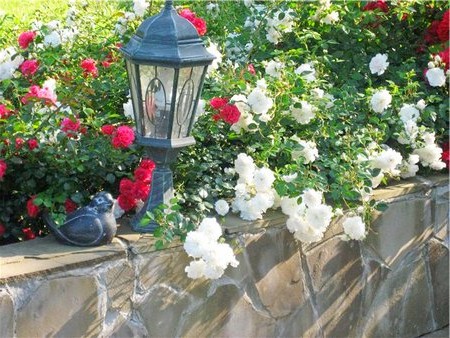

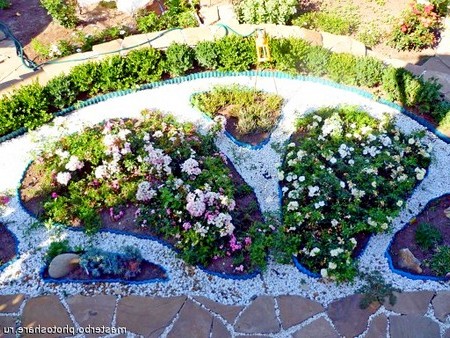
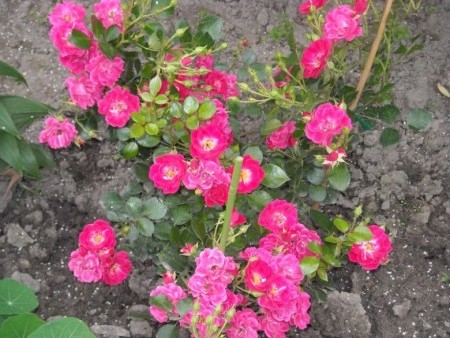
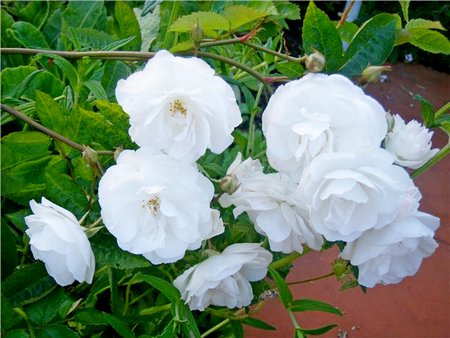

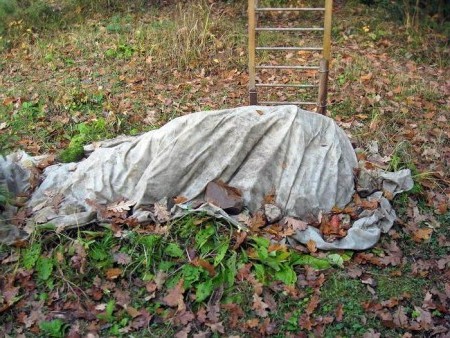

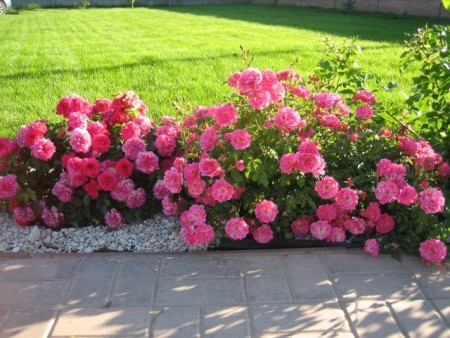
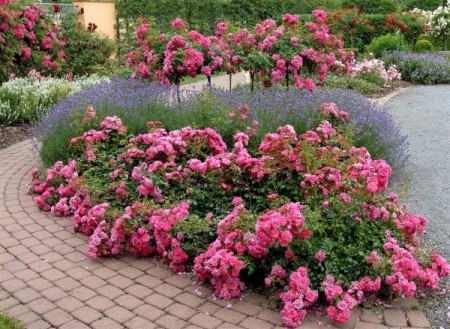
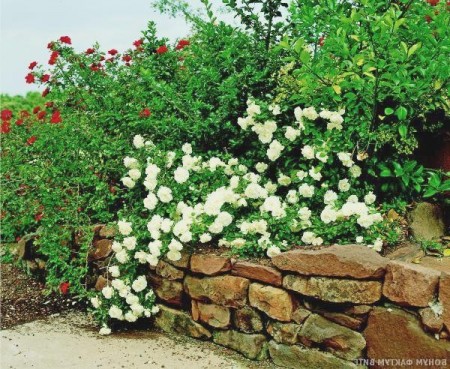
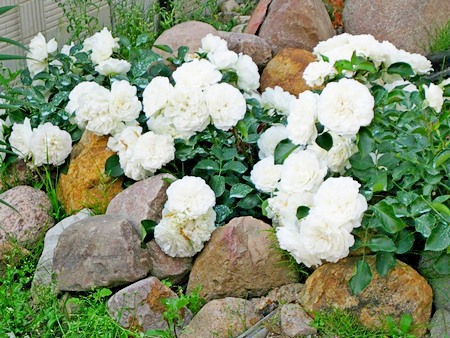






 (20 ratings, average: 4,75 out of 5)
(20 ratings, average: 4,75 out of 5) CUCUMBERS NEVER GET SICK, I'VE BEEN USING ONLY THIS FOR 40 YEARS! I SHARE A SECRET WITH YOU, CUCUMBERS ARE LIKE THE PICTURE!
CUCUMBERS NEVER GET SICK, I'VE BEEN USING ONLY THIS FOR 40 YEARS! I SHARE A SECRET WITH YOU, CUCUMBERS ARE LIKE THE PICTURE! You can dig a bucket of potatoes from each bush. Do you think these are fairy tales? Watch the video
You can dig a bucket of potatoes from each bush. Do you think these are fairy tales? Watch the video
 How our fellow gardeners work in Korea. There is a lot to learn and just fun to watch.
How our fellow gardeners work in Korea. There is a lot to learn and just fun to watch. Eye trainer. The author claims that with daily viewing, vision is restored. They don't charge money for views.
Eye trainer. The author claims that with daily viewing, vision is restored. They don't charge money for views. A 3-ingredient cake recipe in 30 minutes is better than Napoleon. Simple and very tasty.
A 3-ingredient cake recipe in 30 minutes is better than Napoleon. Simple and very tasty. Therapeutic exercises for cervical osteochondrosis. A complete set of exercises.
Therapeutic exercises for cervical osteochondrosis. A complete set of exercises. Which indoor plants match your zodiac sign?
Which indoor plants match your zodiac sign? What about them? Excursion to German dachas.
What about them? Excursion to German dachas.
Ground cover roses look spectacular, although they probably require quite a bit of care.
The rose is considered the Queen of the garden, which means it requires appropriate care. Namely, ground cover roses require no more attention than all other varieties of roses.
In the photo, ground cover roses are certainly beautiful, but in reality they are always dirty and dirty, especially after rain. You either need to add something under them or put something under them.
Katerina, we grow such roses in bushes. We shorten the long shoots, and tie the bush from below with a rope. The rope is not visible under the hanging shoots and the bush turns out to be very nice and always clean.
I grow 3 varieties of ground cover roses in my garden and imagine that they are absolutely clean and fragrant, the secret is quite simple. All roses love mulched soil, so under all my roses I place grass clippings (lawn, weeds, etc.) and roses
thank me for this with their lush flowering.
Elena, thank you for sharing your experience.I am sure that it will be interesting and useful to many readers.
Ground cover roses need to be watered once a week, preferably in the morning. Water at room temperature, poured directly under the bush. This care nourishes the roots with moisture, increasing the availability of nutrients. Young bushes should be watered more often. If there is not enough moisture, this will have a bad effect on the flowering of the rose.
We planted one Fairy bush three years ago. Without any care, regular watering and wrapping for the winter, the bush has already covered 2 square meters and is blooming profusely. They grow just like weeds.
Due to their frost resistance, landscape roses do not require careful winter shelter, like other varieties of roses - they can safely survive frosts under the cover of snow, without any additional insulation.
Last spring we planted 1 bush of ground cover rose. Over the summer it grew a little, in winter they covered it with a white cloth and it overwintered well. Question: what to do with it now, in the spring?
Marisha, you don’t need to do anything special, since it has overwintered, it will grow and delight you with its flowering. Just water it as needed and feed it as written in the article. These roses practically do not need pruning.